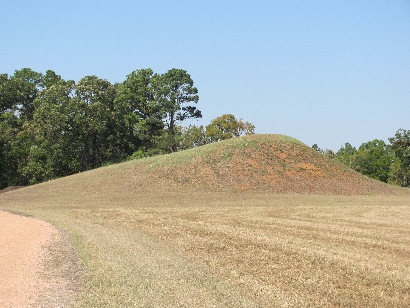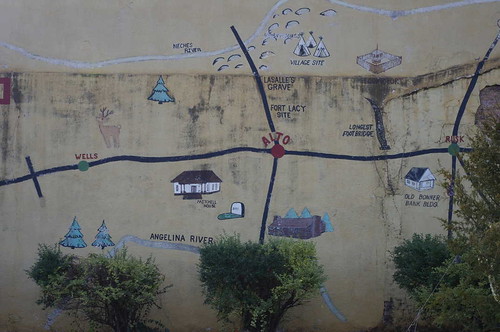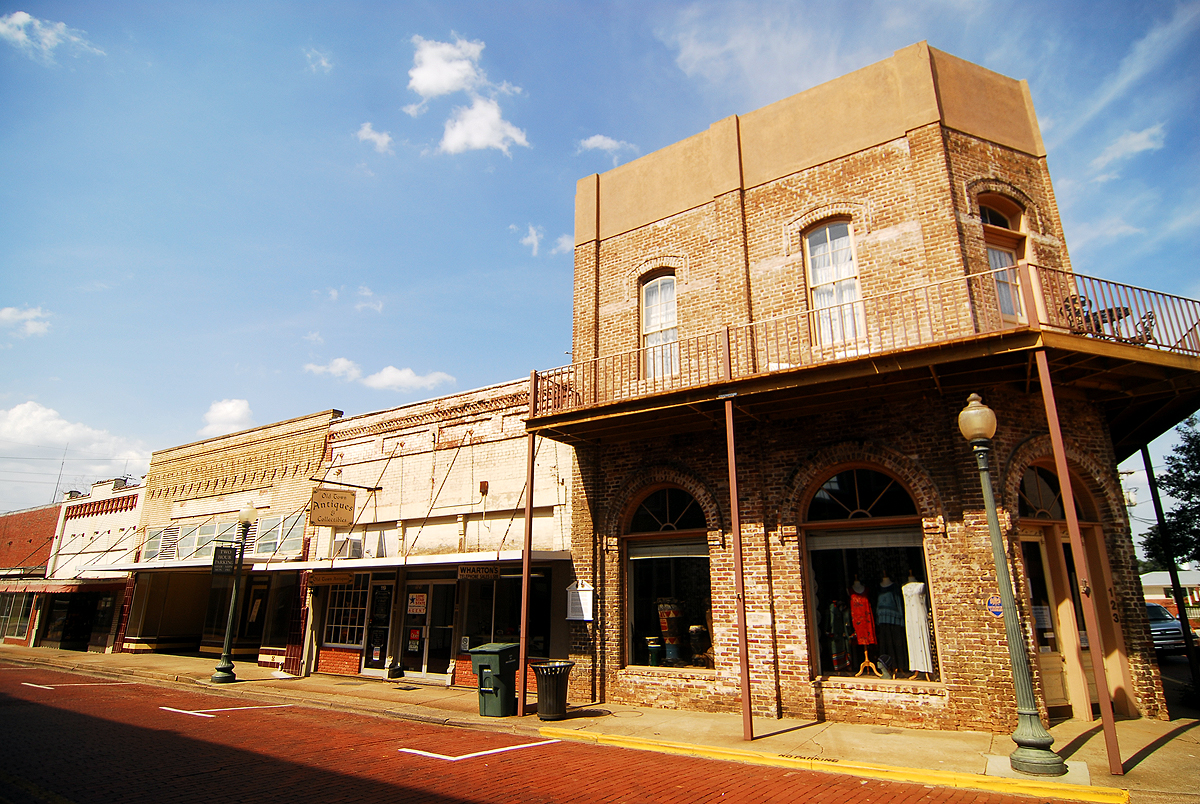Blue Highways: North Zulch, Texas
Unfolding the Map
Click on Thumbnail for MapWilliam Least Heat-Moon's (LHM) passage through North Zulch, Texas occasions my musings on what constitutes our U.S. archeology. I conclude that it's ghost towns. We can't claim what the Native cultures left us, and we're a young country. North Zulch is an artifact that has as much archeological value as anything our United States and its culture has to offer as an archeological treasure. Click on the map thumbnail to see where North Zulch is located.
Book Quote
"I left and went through North Zulch..."
Blue Highways: Chapter 4, Part 1
 Old gas station in North Zulch. Photo by Sam Starkey. Click on photo to go to host site.
Old gas station in North Zulch. Photo by Sam Starkey. Click on photo to go to host site.
North Zulch, Texas
In a past post conceived as I read about LHM's travels through Indiana, I wrote about ghost towns. These towns, remnants of commerce and lives long past which saw their establishment and high times come and go in the life-cycle of things, litter the landscape, especially in the west. But what caused these towns to fade from existence? Sometimes their fates were tied to a specific natural resource, usually a mineral like gold or silver, copper, turquoise or another valuable commodity. Some were lumber towns that died when the merchantable timber had been tapped out.
But sometimes it was more simple. Sometimes towns died because technology literally passed them by. In many cases in the west, that technological marvel was known as the railroad. The creation of railroads was a function of business. Railroad companies saw potential in establishing these two thin slivers of rail through various places, but like any business, it took capital to build them places. Railroads had to acquire right of ways. When crossing public lands, they had to persuade federal, state and local governments to grant them a right-of-way - a strip of land equal to the railbed on each side of the tracks - upon which they would be given the right to put the tracks down. This right-of-way was often granted in perpetuity. When crossing private land, the railroad companies negotiated right-of-way terms with the owners of the land.
Like any business, railroads would go where it was economically most feasible, not necessarily always the most commonsense places. Railroad companies wanted to have their rail lines go through populous business centers, but they were less concerned about whether they hit small towns. If a railroad went through a small town, it could automatically increase the business in that town. But railroads missed a lot of small towns either by chance or design depending on market economics, and those towns that were missed often withered and died on the prairie, or in the shadow of the valley that was not chosen for the railbed.
But some towns, like North Zulch, came about because a railroad missed the town. It is the testament to the determination of a people to not let their town die to which North Zulch, Texas owes its existence today. North Zulch came into existence because the original town of Zulch was bypassed by a railroad. In 1907 many citizens of Zulch, named for the founder of the town Julius Zulch, moved their homes and businesses two miles north to where the Trinity and Brazos Valley Railroad had laid its tracks. By doing so North Zulch prospered, as small towns go, especially when a branch of another railroad, the Houston and Texas Central, was surveyed through the region. In 1931 the town peaked at 1000 residents. But, like the railroads themselves, the town dwindled, until now today it too spends its quiet waning moments as an unincorporated community along a vanished railroad line.
In a young country like the United States, the remnants of towns like Zulch and North Zulch are our archeological legacy. We don't sport the ruins of Rome, or the wonders of the ancient monuments of Greece. We have no great pyramids. We have no mediaeval walled cities or towns. We cannot point toward the Caddo Mounds or the ruins of Chaco Canyon or the cliff dwellings of the Southwest as products of our culture, even though they are within the United States. We have our living cities and towns, which must move beyond their usefulness before they become artifacts of our civilization. And unfortunately, we'll have long joined the dust before our gleaming buildings and our soaring monuments become archeological discoveries of a future age.
But, we have our ghost towns, sitting silent on prairies, in deserts and in the long evening shadows of valleys that once rang with the shouts of children, the metal-upon-metal ring of industry, the call of livestock, and the rise and swell of voices bartering, buying, selling, commercing, conversing, laughing, loving...living. We have small places, once larger and more prosperous, reduced like North Zulch to a sleepy remnant of their pasts along a railroad line that once was a conduit of wealth and plenty and a road to those faraway places only read about. These are our legacy, our artifacts, and the archeological treasures that represent us.
If you want to know more about North Zulch
TexasEscapes.com: North Zulch
Texas State Historical Association: North Zulch
Wikipedia: North Zulch
Next up: College Station, Texas




 Monday, January 24, 2011 at 10:21PM
Monday, January 24, 2011 at 10:21PM

